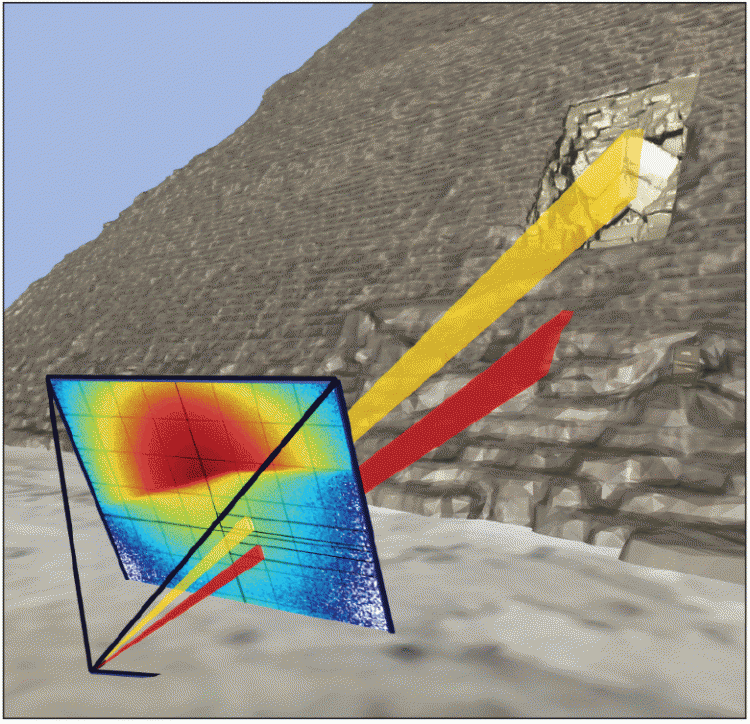
Suppose that you need to see what is inside a small room that is difficult to access. Thick walls between you and the object of your investigation; you cannot dig, and the closest that you can get to the target is inside a narrow tunnel, with no electricity to power your instrumentation. What would you do?
Fundamental physics may come to the rescue.
CMS Researchers from two Belgian universities, UGent and UCLouvain, are developing a small-size muon telescope, using very similar design and electronics as the Resistive Plate Chambers (RPC) of the CMS experiment. Such telescope can be used to perform muography (radiography or tomography with cosmic-ray muons) in challenging logistic situations, for example in small rooms or underground.
A muon is essentially a heavier cousin of the electron and is one of the most penetrating charged particles, and muography is a novel imaging technique that originates from developments in particle physics. It exploits the abundant natural flux of muons created in interactions of cosmic rays with the atmosphere.
In the last decade, several teams have developed large-area muon telescopes for applications in volcanology and with the help of these some active and dormant volcanoes are now being studied in Italy, France and Japan. Particle detectors have also been located in railway tunnels to investigate the geometry of bedrock beneath active glaciers in the Jungfrau region in Switzerland. Additionally, applications for muography have been developed in nuclear waste monitoring, archaeology, and homeland security. Examples of the latter include two other CMS spin-offs using the Drift Tubes and GEM detectors. The new CMS project will be the first spin-off of the CMS RPC technology in muography, although large-area RPC are already in use for application in volcanology by the TOMUVOL team in France, in that case as a spin-off of the CALICE project for the International Linear Collider.

The muon telescope developed by the CMS Collaborators from Ghent University and the University of Louvain in Belgium.
The project originated for a completely different purpose, related to the R&D of the CMS detector towards its Phase-2 upgrade. Some variants of the current CMS RPC design were investigated (such as different electrode materials and eco-friendly gas mixtures), and small-area prototypes were built for these testing purposes. It was soon realized that the excellent intrinsic spatial resolution of RPC detectors (easily better than 1 mm), the relative simplicity of construction and low manufacturing cost would make these mini-RPCs a perfect tool for high-resolution muography. A first prototype telescope, composed of four RPC planes with active area of 16x16 cm2, has been built and tested at UCLouvain with the help of UGent researchers. The same prototype has participated in the "UCL to Mars" project, the team implicitly testing its robustness by delivering it to a remote location in the Utah Desert, operating it there, and getting it back, still perfectly operational after one month.
The driving principles in this telescope's design are compact size, modest weight, gas tightness, robustness and ease of transportation. CMS researchers will continue working on the construction of new prototypes with finer resolution and better performing electronics, and their usage in real-life applications.
Find out more:
- "A portable muon telescope based on small and gas-tight Resistive Plate Chambers", S. Wuyckens, A. Giammanco, P. Demin, E. Cortina Gil (2018), arXiv:1806.06602 [physics.ins-det], proceedings of the "Cosmic-Ray Muography" meeting of the Royal Society. https://arxiv.org/abs/1806.06602 and Phil. Trans. R. Soc. A 377 (2018) 20180139
- Log in to post comments

